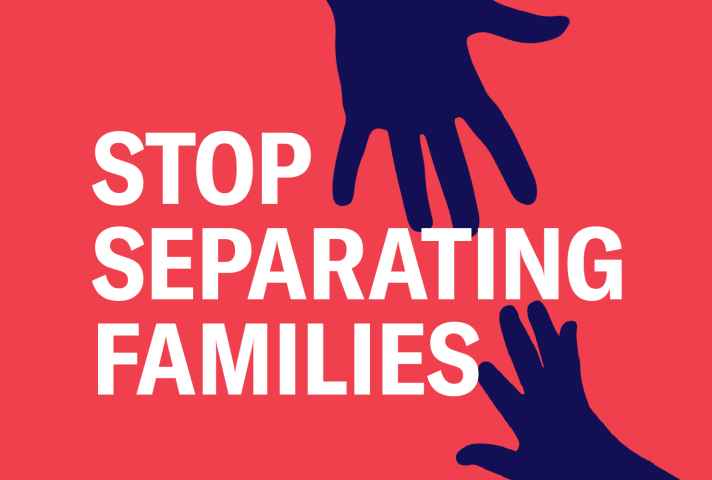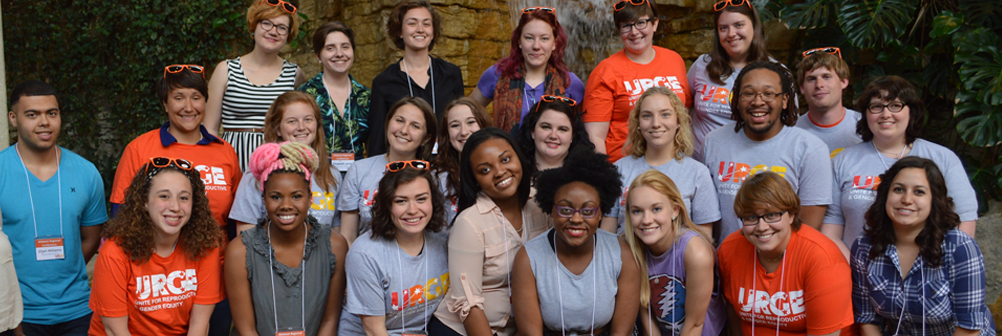Keeping All Families Together Is An RJ Issue

Posted by Hannah Bae
September 6, 2019
The recent and mainstream reproductive rights conversation in the United States has been narrowly limited to the discussion of reproductive “choice” and abortion access. However, the media and legislative attention on the topic of abortion fail to convey all the issues encompassed by reproductive justice. While abortion and “choice” are extremely important topics for individuals with the ability to become pregnant, only looking at abortion access restricts conversation about another significant aspect of reproductive justice: the right to family life.

Source: ACLU of Illinois
The right to family life, which can be loosely defined as the right of an individual to have and keep a family, is included across various pieces of international law, such as the Universal Declaration of Human Rights. If you can’t have your family recognized, have or parent your children, make healthy and autonomous decisions for your family, or stay with your family–that is not reproductive justice.

Source: Giphy
Unfortunately, the right to family life has a long history of being violently infringed upon in the United States:
-
- One well-known example is the separation of enslaved black families. Starting and being a family was difficult under slavery itself; the legality of slavery and the social conditions uniquely impacted how individuals could express their right to family life. However, slave owners would also sell children from parents or spouses, separating them from each other. Family relations were weaponized as a threat, a means to control bodies, and ultimately, as a way to uphold the system of chattel slavery.
-
- Native American boarding schools are another example. Starting in 1860, indigenous children were forcibly taken from their families and made to assimilate in boarding schools that were often abusive and exploitative. Involuntarily removed from reservations, these children would have to abandon their way of life and everything they’d known—and some never made it back to their families. Infectious disease outbreaks at the boarding schools severely affected the health of indigenous students, leading to the deaths of many.
From the family separation of enslaved folks to the legal kidnapping and forced assimilation of indigenous children to the raids and family separation by immigration officials today, it is clear which families the law isn’t willing to protect. The legacies that arise from the United States’ sordid history only serve to solidify the perceived illegitimacy of families made up of individuals with marginalized identities. Political agendas and right-wing ideology will denounce certain families, justify dissolving them, and act like they never had the right to exist within our borders.
The institution of family is considered to be vital; it’s held with almost a reverence in our nation. However, when there are families that are only allowed to be together or approved of because they meet certain conditions—such as being nuclear, having citizenship, or being unincarcerated—then there needs to be a deep reevaluation on whether we, as Americans, really uphold and believe in the right to family life. While a large majority of citizens claim to respect the family as a fundamental unit, the widespread allowance of current deportation, incarceration, and other discriminatory policies that continue to separate families seems to indicate otherwise.
In this way, the right to family life intersects with various issues in the United States: barriers to LGBTQ+ parenting, the immigration system, the criminal justice system, the foster system, and so on. Especially with the immigration system—we are living in a time that will define the future history of America. Reproductive justice activists must fight intentionally and vigilantly for families that are not allowed to exist in peace and with respect in our country.

Source: Giphy
What you can do:
-
-
- Think critically about historical and current events and their relation to the right to family life and reproductive justice. These instances do not happen in silos; they are not isolated. Make the connections between events, issues, and reproductive justice.
-
- Educate others on how reproductive justice and the right to family life interact with other issues. Talk to them about how reproductive justice is comprehensive and doesn’t focus on a singular issue.
-
- Keep learning. This is by no means an encompassing list of horrific injustice that existed and continues to be perpetuated today.
- Be a visible and intentional ally! The right to family life is one that various marginalized people may have difficulty accessing. Protect all families in the ways you can. Research to see what local initiatives or organizations you can advocate with, and how you can better work with people in your area.
-
Leave a Reply
You must be logged in to post a comment.

